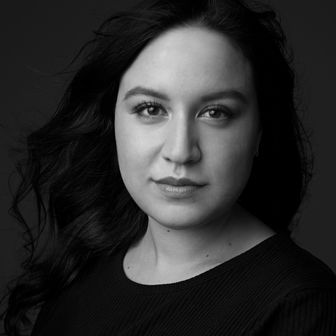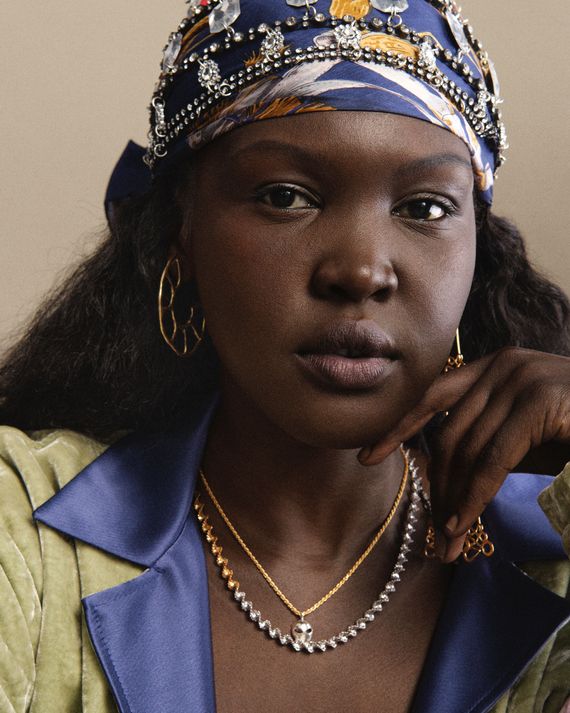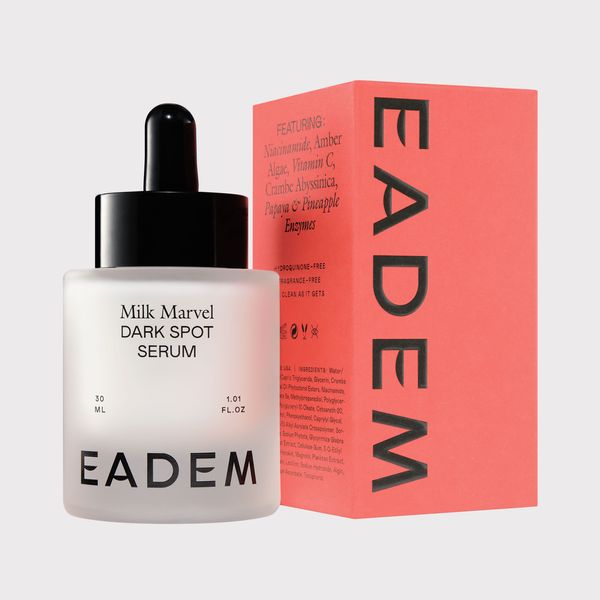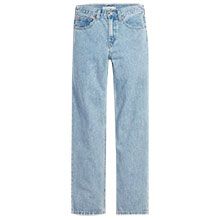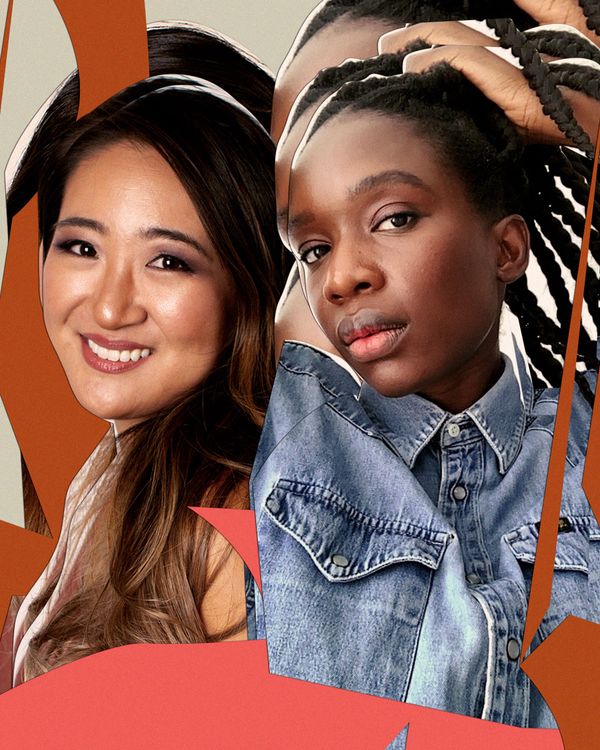
A few years ago, Marie Kouadio Amouzame was in a luxury store looking for foundation. “I couldn’t find my shade, although I knew the brand sold it — a poster of a Hollywood actress wearing that shade was literally on the wall,” she says. “I asked for the product, and the salesperson looked at me, and he was like, ‘Oh no, we don’t carry that shade here,’ meaning that store doesn’t cater to people that look like me. It was really humiliating, and to this day, I still remember it.” This was hardly Amouzame’s only frustrating experience navigating an industry that didn’t recognize her needs. So in 2019, she joined forces with her friend Alice Lin Glover, whom she’d met working at Google, to create Eadem, a skin-care company founded with skin of color in mind.
Eadem means “all” or “the same” in Latin. “Marie and I recognize that we saw something in each other — even though we don’t look the same on the outside, we have a shared similar perspective,” says Lin Glover. And after three years of work, and recognition from Glossier’s Grant Initiative for Black-Owned Beauty Businesses and Sephora’s Accelerate program, the pair launched their first product last week. The Milk Marvel Dark Spot Serum was formulated to gently and safely treat hyperpigmentation, a common skin condition among women of color, using “smart-melanin” technology. Each active ingredient included in the formulation has been tested on real people, and specifically, on people of color. It features amber algae, vitamin C, niacinamide, and licorice root extract combined with crambe abyssinica oil to even out skin without lightening the area surrounding a dark spot.
Below, Kouadio Amouzame and Lin Glover discuss the roots of their business, the struggles they’ve encountered, and why skin care made specifically for melanin-rich skin is absolutely necessary.
How did you get the idea for your business, and which came first: the desire to run your own business or the idea?
Marie: I’ve had a ton of different jobs. I’m an engineer — that’s what I studied — I worked in sales, I worked in marketing, I worked in brand strategy, and the goal in my head was always to start my own business. The idea for doing skin care came much later.
Alice: I grew up with severe cystic acne and hyperpigmentation — I still deal with it now — and my mom and I did everything we could: I went to dermatologists and aestheticians. I took herbal tonics from traditional Chinese medicine healers. At overnight sleepovers, I would spot treat my acne scars and cover them so no one would have to see them. And it’s interesting because everyone of color has hyperpigmentation and acne, but it feels so personal, and what I’ve heard, and I felt myself, is that it really weighs on your confidence. So when I realized that millions of people suffer the same way, I was like, “I have to do something about it.”
Also, looking at the creams I used, they had hydroquinone, which is banned in other countries because there are studies that say it will give you cancer. It’s meant to be only used for six months at a time under the guidance of a dermatologist because if you use it for too long, especially if you have a darker skin tone, it’ll cause white halos around your dark spots. And luckily, I didn’t experience that, but who’s gonna use it for only six months when you have hyperpigmentation for decades? I’m 34, and I was using it for probably 20 years, and I didn’t know.
Marie: Coming from France, and going to CVS and seeing products with hydroquinone was extremely shocking. We have documentaries on hydroquinone in France that we see on TV, and everyone knows this ingredient, and to walk around and see you could just buy it, I still cannot understand. We know these products target people of color first and foremost.
You launched the brand with a blog covering beauty around the world. What inspired it?
Marie: We interviewed women of color, and all of them said it was really hard to navigate the beauty landscape. They told us hyperpigmentation was a big issue, but there were also so many rich stories about their origins because there’s also so much more than just topical products that you can apply to your skin.
Alice: For example, a Bengali writer, Tasnim Ahmed, wrote about turmeric. She explains that some people don’t understand the cultural significance of turmeric, and as we were pulling the article together, we realized that there’s a universality to this story. When she talked about how people used to make fun of her for having yellow fingertips from the turmeric, it made me think of when I went to school and I had “weird” things in my lunchbox, and people would make fun of me about it. I think that everyone that has the second culture perspective can really relate to a lot of these stories. And also, “clean” beauty is now a trend, but our moms and our grandmothers and great grandmothers have been doing “clean” beauty practices for centuries. There’s just so much richness and depth to all these different cultures and perspectives.
When you were putting together your business plan, who did you talk to? Who were you approaching for advice? Did anybody say to you, “Don’t do this?”
Marie: We were lucky enough to have been pretty successful before so we have a network of ex-bosses and ex-managers who we went to early on and showed them at least a high level of what we wanted to do. Everyone was like, “You guys are a strong team and you work so well together, you should go for it.” That’s the positive. The discouraging part came mostly from investors. Someone even told us, “Oh, but you know, this is for ethnic people. People of color, I’m not sure that these people spend money on beauty.” If you don’t have skin of color, if you are a man, you’re probably not going to get what we’re trying to address. Instead of wasting time, I thought, “Why don’t we just go for it and see where we land?”
Alice: And as a result, we’re actually self-funded and bootstrapped with our own savings so we have never formally approached investors.
Marie: We certainly want to approach investors and start those conversations, but now, we have a proof of concept and a grant from Glossier that validates our brand. We are in the Sephora Accelerate program that validates the retail viability of our business, so it’s a much stronger proposal.
Since you aren’t relying on investors, how did you begin to save money for the business?
Alice: It’s interesting because we both left our jobs that our parents would be proud of. When you have immigrant parents, they ask, “Why would you ever leave your big tech-company job to go start something new in beauty?” But it came to a point where it was so time-consuming that we really had to focus just on Eadem. I set aside money that, instead of going to business school, or something my mom would want me to do, I was going to spend towards Eadem. It has been hard because you have the anxiety of, I need to succeed because you don’t have an out.
What has been the biggest struggle so far?
Marie: Time. I had a baby at the peak of COVID — I have two kids now — and then working on a business full-time, I’m not gonna lie, it’s really hard. Before I was all about, “Everything has to be perfect.” I’m a perfectionist, borderline obsessed, but I can’t do it all. I’m just like everyone else, just trying to figure it out and trying to be present for my family.
Alice: I also had a baby during COVID — my baby just turned 6 months — and sometimes people have a tendency to idolize entrepreneurship and the struggle, and there’s this idea that “moms that do it all,” and I’m like, “I’m sorry, but I am so tired, and it’s exhausting!” First off, it’s hard to be an entrepreneur, and babies don’t run on industrial time so you have to do what they want when they want it, so it’s a struggle, and I am happy to do it, but there certainly are days where you just wish you could sleep all day. The other thing that’s hard is child care. Luckily, my mom is helping me. I think if I didn’t have that family support, this would be impossible.
When you approached your lab, what were the initial conversations like? What sort of questions are they asking you?
Marie: The first thing you need to prepare is actually not about the product itself. It’s your brand vision. What’s specific and unique about it? How are you going to talk about things? What packaging is it going to go in? What’s the fill color? Then you get into the formula, how it feels, and how it should apply. You have to list out the ingredients that you want, and it’s only when you have all these things very detailed that you go talk to a lab. If you go without an idea, they will turn you down, or create something that you might not want.
Alice: We have a formulator, and we have our dermatologist who advises us, as well. When you’re a woman of color, people like to second-guess everything you do, and so you say, “Okay, let me get my panel of experts so that you can’t argue with me about the validity of what we’re doing.” We put in the work, and I want people to respect that. It’s not smoke-and-mirrors marketing, it’s real science.
You mentioned that testing the product was more expensive than it typically would be. What was the additional cost?
Alice: A lot of products aren’t even tested at all, period, but if they are, then they’re usually not tested on the right panel. Most dark spot serums address aging dark spots, and by default, the panelists are usually 50-plus years old, and they’re primarily a panel of white people, and this is because when labs recruit people, that’s the database they have. And if you think about why, you have to consider the “ideal” customer. Coming from tech, when companies talk about their “ideal” customer, it’s a high-net-worth white woman usually. So that’s the same kind of pool that labs are drawing from because that’s what companies are asking for.
Two, there also needs to be an understanding of the type of hyperpigmentation we’re talking about. For people of color, it’s primarily post-inflammatory hyperpigmentation, that’s anything that you get after a bug bite or acne. Labs still struggle to understand that type of hyperpigmentation in general. Marie is let’s say a Fitzpatrick type six, which is how they classify skin tones based on the amount of pigment, and labs will ask us, “But can you see dark spots on someone with Fitzpatrick type six?” and we will send them photos like, “Do you see this? This is a dark mark.” And they’re like, “Oh, really?”
So, there’s a cost to the time that it would take labs to understand and find the right panelists. Then I also had to approve everyone that goes into our trial, which is not always standard. We wanted a dermatologist and an expert grader to really see if there was a difference with Milk Marvel, and we also wanted to measure that the serum doesn’t lighten your skin overall. There was that extra complication of labs saying, “We’ve never had anyone ask us for things like that before.”
There seems to be this debate about whether skin care for people of color is actually necessary. I was scrolling through Instagram recently and encountered a post that said that skin care for skin of color is a “sham because ingredients don’t discriminate.” She argued that it was just a marketing ploy to sell products.
Alice: Of course ingredients don’t discriminate, but it’s all about context, right? Essentially, because people of color have more melanocytes, which is what gives us our skin tone, those cells are really sensitive to stress, inflammation, and heat, and because of that, it can cause hyperpigmentation, and even hypopigmentation, which is when your skin lightens after the cell is injured. When you have a lighter skin tone, your melanocytes are less active so you can’t see the difference as much, and so light skin tones can tolerate harsher chemicals. When you have more melanocytes, it matters how you treat your skin, which is why it matters to us that we don’t put 20 percent vitamin C in our serum, for example — a high percentage of vitamin C can actually bleach skin. Along the same line, lasers don’t discriminate either, but we know that lighter skin tones can tolerate chemical peels and lasers better without risk of pigmentation than darker skin tones. It’s kind of that same concept.
Right. I recently interviewed someone who told me they’ve been dealing with melasma for years as a result of a laser treatment. The problem was that her dermatologist had never worked with melanin-rich skin, and so she got her Fitzpatrick type wrong.
Marie: You’re touching such an important point, and I think that’s also the answer to the debate. To the person who said that skin care for skin of color is a sham, what we’re talking about from a scientific standpoint is not the color of your skin. It’s the ability of your skin to tan and not burn under the sun, regardless of how it looks when you look at the person. So if your ancestors were of African descent but you look pretty light-skinned, you still have skin of color because your melanocytes have that memory. That’s what we’re talking about — it’s not so much about the color of your skin but about the way your skin behaves.
